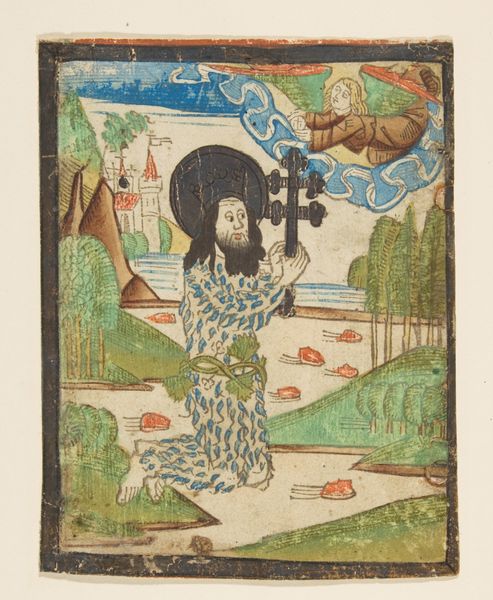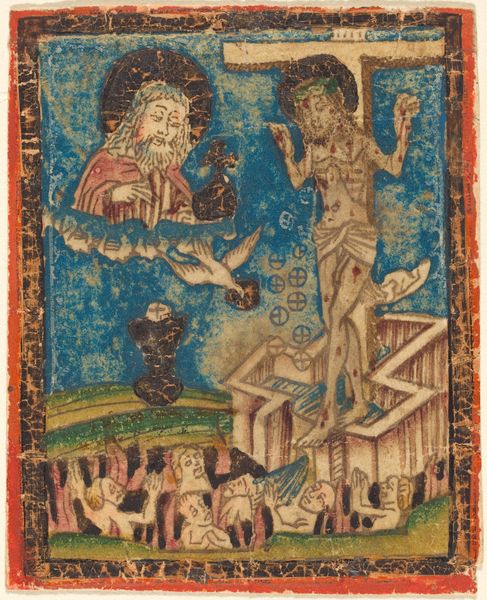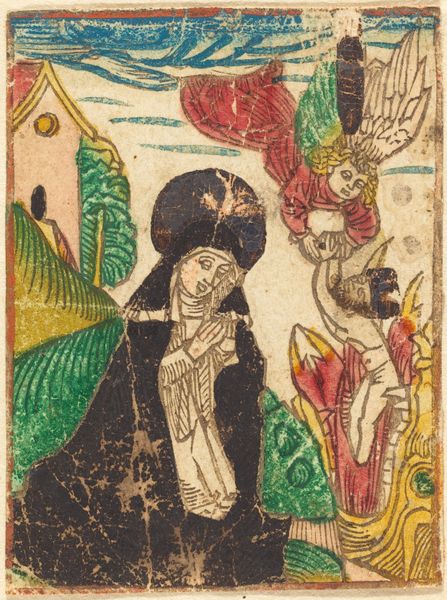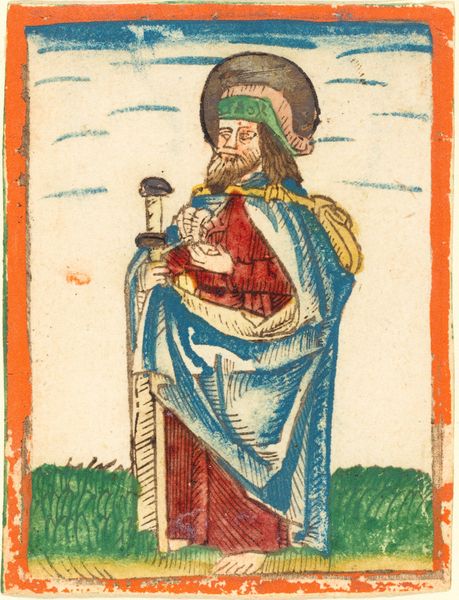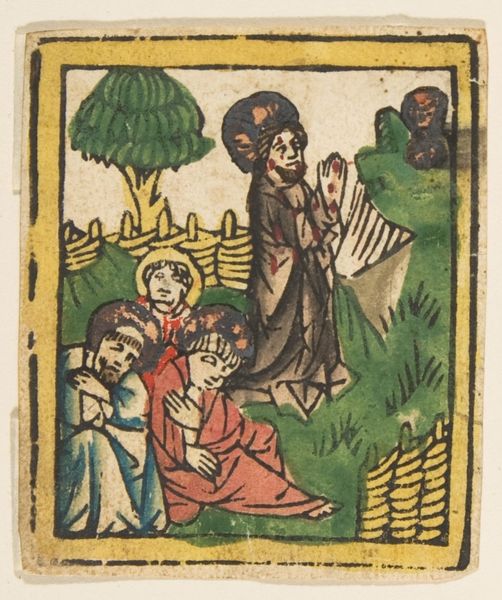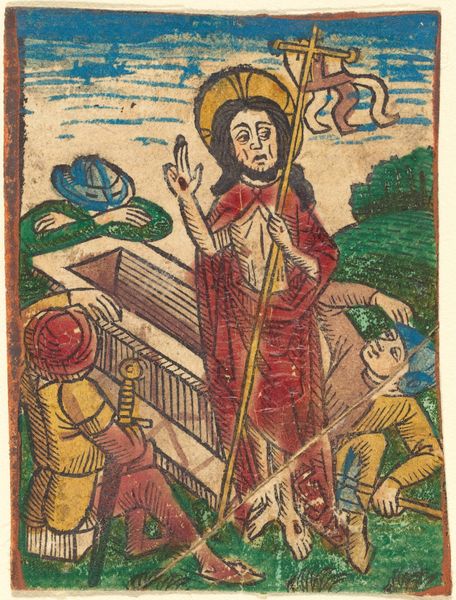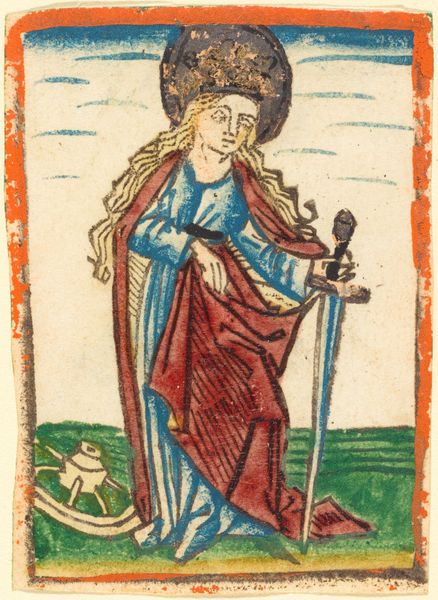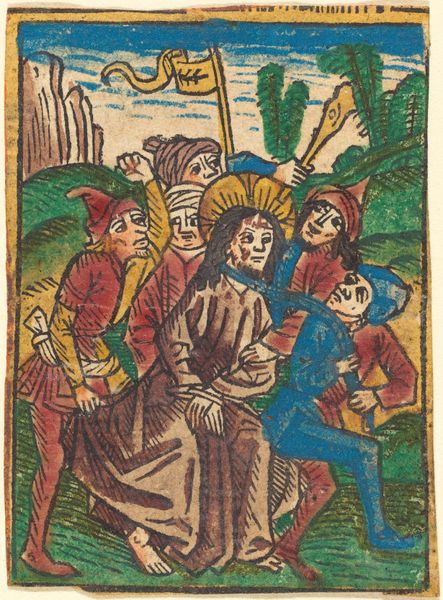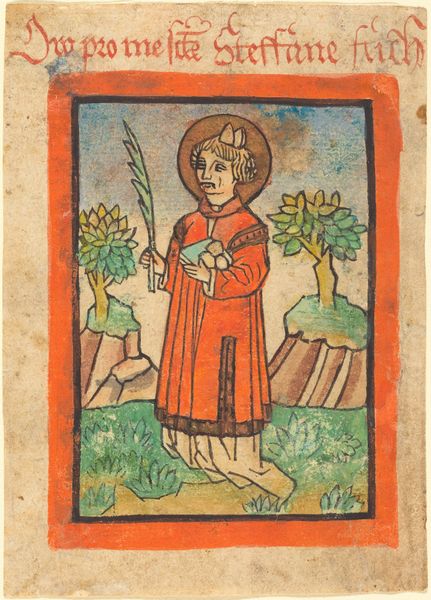
coloured-pencil, print
#
coloured-pencil
#
medieval
# print
#
landscape
#
figuration
#
coloured pencil
#
naïve-art
#
naive art
#
watercolor
Dimensions: image: 9 x 7.1 cm (3 9/16 x 2 13/16 in.) sheet: 9.8 x 7.7 cm (3 7/8 x 3 1/16 in.)
Copyright: National Gallery of Art: CC0 1.0
Curator: Well, here we have "Saint Onuphrius," a colored-pencil print made around 1480. What strikes you most when you see it? Editor: It’s remarkably…earthy, isn't it? The stiff, almost clumsy rendering of the figure, juxtaposed with the landscape. The textured, almost naively rendered color feels significant, as though they struggled with color mixing techniques. It gives it a sort of… earnestness? Curator: Indeed. Consider this image in the context of late medieval piety. Saint Onuphrius, an early Christian hermit, renounced society to live in the desert, seeking spiritual purity through isolation. The print reflects the rising popularity of saints' lives, showcasing figures embodying moral virtue, printed for the everyday Christian for their own instruction and emulation. Editor: Emulation seems a strong word given his… unconventional attire, or lack thereof. It also gives us a glimpse of society's broader conception of devotion. Curator: The artist employs a unique visual language to portray Saint Onuphrius. Look at how the cross-hatching of the print mimics the texture of his wild beard and leafy skirt, highlighting his detachment from earthly vanities. The halo, while standard iconography, sits a little off center. Editor: That uneven halo! It throws the whole composition off balance, doesn't it? I agree about the emphasis of the surface texture. Note the clear lines throughout and almost childlike hand. And is that an angel bearing clothing? I also wonder what inks were employed— that blue has such a distinct visual signature for the period, the overall limited chromatic range helps draw your attention to specific symbolic regions of the piece. Curator: Art was very political in the late Medieval times; printed images of Saints were a means of expressing devotion, creating common understanding through icons that the populace were all taught to follow. I believe this example highlights that. It does feel intentionally designed for accessible mass consumption. Editor: Interesting. It’s a crude but compelling image, prompting curiosity about both its form and its function, that imperfect rendering adding to its appeal. I see both form and utility colliding beautifully here. Curator: Exactly. These early prints allow us a unique portal into understanding religion, representation and artistry for all, offering a powerful insight into this era of history.
Comments
No comments
Be the first to comment and join the conversation on the ultimate creative platform.
